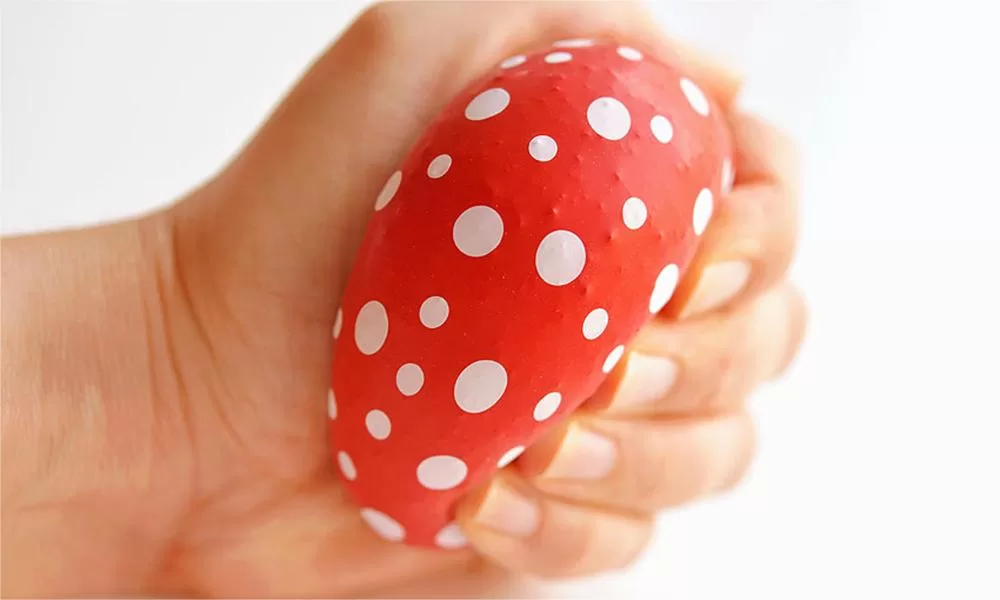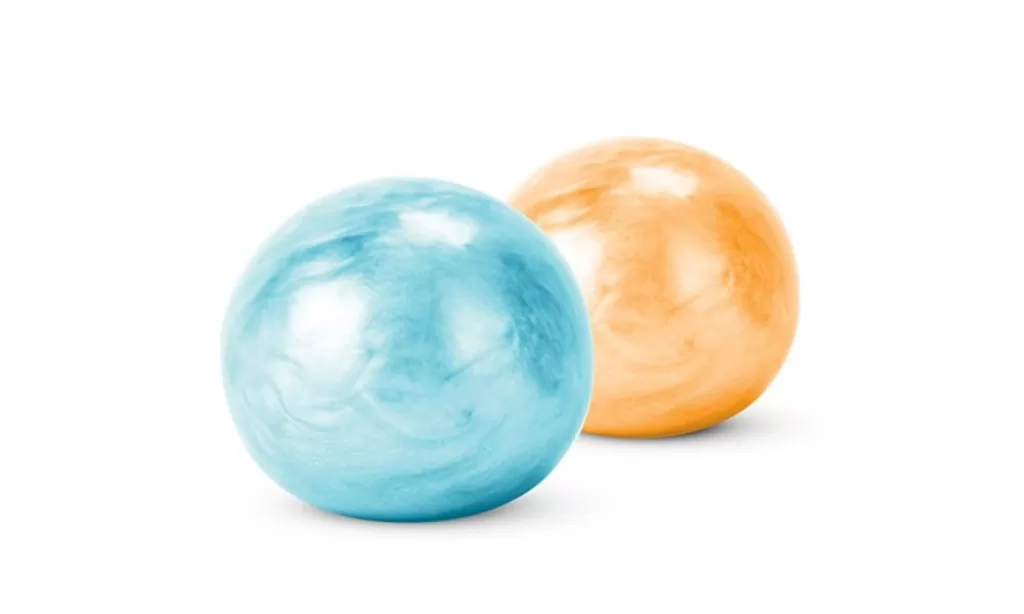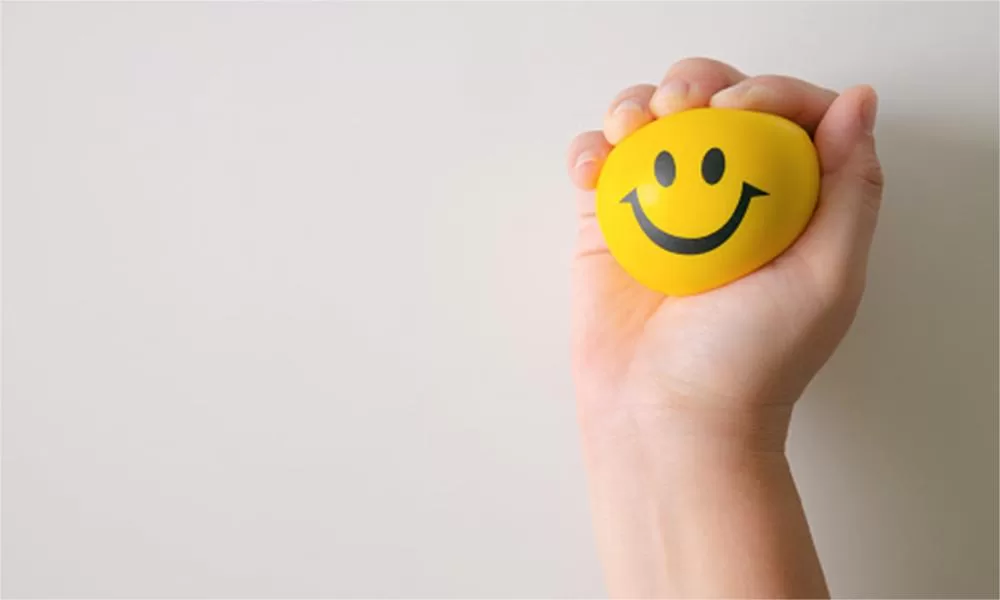In the world of stress relief tools, stress balls of different materials have emerged as a popular choice. This comprehensive guide dives into the specifics of these stress balls, exploring their various types, benefits, and how to choose the right one for your needs.

Understanding Polyurethane Stress Balls: Pros and Cons
Polyurethane stress balls are a popular choice due to their lightweight and soft texture. They are made from a type of foam that can be molded into various shapes and sizes, making them versatile for different promotional needs. The material is also cost-effective, which is a significant advantage for businesses looking to order in bulk. However, while polyurethane stress balls are durable, they may not withstand heavy, repeated use over time. The material can break down and lose its shape, especially when subjected to strong pressure repeatedly.
Which Material Stress Ball is Right for You?
The ideal stress ball material largely depends on your specific needs and preferences. For a soft, squishy feel, foam stress balls are a great choice. They are perfect for light use and can help relieve stress without requiring much force. On the other hand, if you’re looking for a stress ball for therapeutic purposes, such as hand strengthening exercises, a firmer rubber or gel-filled stress ball would be more suitable. These materials provide more resistance, helping to build muscle strength over time.
Eco-friendly Stress Balls: The Advantages of Natural Rubber and Silicone
If environmental impact is a concern for you, consider opting for stress balls made from natural rubber or silicone. These materials are biodegradable and non-toxic, making them a more eco-friendly choice. Natural rubber and silicone stress balls are also highly durable, and able to withstand repeated squeezing and stretching without losing their shape. This makes them a long-lasting option that offers excellent value for money.
The Most Comfortable Stress Balls: Comparing Memory Foam and Polyurethane
For ultimate comfort, memory foam stress balls are hard to beat. They provide a unique sensation, as they slowly regain their shape after being squeezed. This slow-rising action can provide a satisfying tactile experience that enhances the stress-relieving effects. Polyurethane stress balls, on the other hand, offer a different kind of comfort. They are firmer and bounce back quickly, providing a more immediate response that some people may find more satisfying.
Hardness Matters: The Hardness Levels of TPU, EVA, and PVC Stress Balls
The hardness of a stress ball can significantly impact its effectiveness and how it feels to use. TPU (Thermoplastic Polyurethane) and EVA (Ethylene-Vinyl Acetate) stress balls are generally softer and more flexible, providing a gentle resistance that’s suitable for light stress relief and relaxation. In contrast, PVC (Polyvinyl Chloride) stress balls are harder and more durable, offering stronger resistance that can be beneficial for hand-strengthening exercises or more intense stress relief.

Health-Friendly Stress Balls: Comparing BPA-Free Plastic and Organic Rubber
For those concerned about health and safety, BPA-free plastic and organic rubber stress balls are excellent choices. BPA-free plastic is free from Bisphenol A, a chemical that has been linked to various health issues. These stress balls are safe to use and offer a firm, satisfying squeeze. Organic rubber, on the other hand, is a natural material that is hypoallergenic and free from harmful chemicals. It’s also highly durable and provides a good level of resistance for stress relief and hand exercises.
Choosing the Right Weight and Size: Different Materials and Their Weights and Sizes
The weight and size of a stress ball can greatly affect its usability and effectiveness. Lighter materials like foam and polyurethane are ideal for those looking for a stress ball that’s easy to squeeze and carry around. Heavier materials like rubber or gel-filled stress balls provide more resistance and are better suited for hand-strengthening exercises. The size of the stress ball also matters. Smaller stress balls are great for portability and for those with smaller hands, while larger stress balls can provide a more substantial grip, which can be more satisfying for some.
Professional Stress Balls: The Specialties of Polyurethane, Rubber, PVC, TPU, and Silicone
Different materials lend themselves to different professional uses. Polyurethane stress balls, for instance, are often used in promotional events due to their cost-effectiveness and versatility in design. Rubber and silicone stress balls, with their excellent grip and durability, are popular in therapeutic settings for hand and grip strengthening. PVC and TPU stress balls, being harder and more durable, are often used in more intense therapeutic and athletic training scenarios.
Durability: The Lifespan and Maintenance of Different Material Stress Balls
The durability of a stress ball depends largely on its material. Polyurethane and foam stress balls, while soft and comfortable, may wear out faster with heavy use. Rubber, silicone, PVC, and TPU stress balls are more durable and can withstand repeated squeezing and stretching. To prolong the lifespan of your stress ball, it’s important to handle it with care and avoid overly aggressive squeezing or stretching. Cleaning the stress ball regularly can also help maintain its quality and longevity.
Price Comparison: The Cost-Effectiveness of Different Material Stress Balls
The price of stress balls can vary greatly depending on their material. Foam and polyurethane stress balls are generally the most affordable, making them a great choice for bulk orders for promotional events. Rubber, silicone, PVC, and TPU stress balls tend to be more expensive due to their higher durability and specialized uses. However, their longer lifespan and effectiveness can provide better value for money in the long run.

Conclusion
Stress balls, regardless of their material, serve a significant role in promoting stress relief and overall well-being. Understanding the differences between the materials can help you make an informed decision and choose the stress ball that best suits your needs and preferences. Whether for personal use or promotional purposes, a stress ball is a cost-effective and beneficial tool to have.

